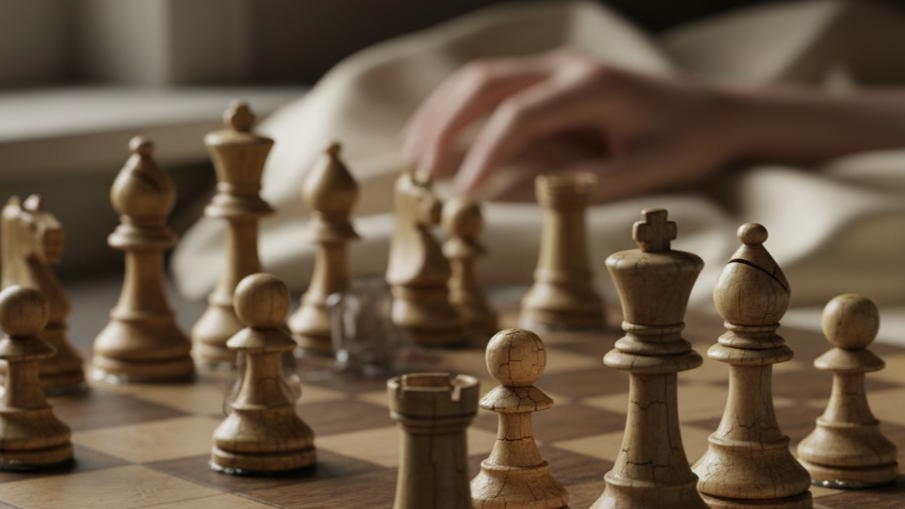The Conceptual Checkmate: Why Marcel Duchamp Transferred His Genius to the 64 Squares
Marcel Duchamp (1887–1968) is widely remembered as the artist who, by the early 1920s, famously renounced the contemporary art scene to pursue chess. As rumors circulated that he had abandoned the studio to become a professional chess master, the artist made no effort to correct the narrative. Yet, Duchamp never truly quit art; he transferred his genius to a pursuit he considered a higher, purer form of conceptual beauty. He positioned chess as an extension of his conceptual practice, once declaring, “while all artists are not chess players, all chess players are artists.” For Duchamp, chess was the ultimate intellectual exercise, fulfilling his ambition to put art back in the service of the mind.
Purity and the Personal Price
Duchamp's dramatic withdrawal from painting stemmed from a philosophical distinction he drew between aesthetic domains. He dismissed the work of many contemporaries as "retinal art," arguing that it was merely intended to please the eye and focused only on visual pleasure. He sought to advance art toward "intellectual expression."
Chess, conversely, was the pure, non-retinal mental art he advocated. Duchamp esteemed the game because it "cannot be commercialized" and was "much purer than art in its social position." The beauty, he argued, was not in the physical pieces or the visual spectacle, but lay entirely in the mental space of the players—a conflict unfolding solely in "one's gray matter." He conceptualized the pieces as a "block alphabet which shapes thoughts," asserting that the moves expressed abstract beauty "like a poem."
This intellectual preoccupation was apparent even in his early work. His 1911 painting, Portrait of Chess Players , depicts his brothers engrossed in a match. Using Cubist techniques of "demultiplication," Duchamp sought to represent the invisible, simultaneous mental interactions. The pieces appear as flattened shapes floating between the players' repeating profiles, visually symbolizing the unseen mental projections of the game.
However, Duchamp's singular focus came at a palpable personal cost. His devotion to the game was famously described as acting "a bit like a drug," a passion that quickly undermined his first marriage in 1927. During their one-week honeymoon, Duchamp spent the majority of his time studying chess problems. In a dramatic act of "desperate retaliation," his wife, Lydie Sarrazin-Levassor, famously awoke one night and glued the chess pieces to the board while he was asleep. They divorced only three months later.
The Board as a Gallery
Although the rumor that he had abandoned art circulated widely, Duchamp continued to direct the conceptual flow of the art world, primarily by making chess itself the subject of his conceptual practice.
This agenda was prominently displayed in the influential 1944 exhibition, The Imagery of Chess, which he co-organized with Max Ernst and Julien Levy in New York City. The landmark show challenged 32 prominent artists to reimagine traditional chess sets. Duchamp contributed the Pocket Chess Set with Rubber Glove (1942), a readymade that implied an absent hand—a subtle conceptual move that displaced the priority of authorship and emphasized the spectator’s role in generating meaning.
The exhibition became a stage for performance. Duchamp served as interlocutor/referee for a highly publicized blindfold chess event, reciting moves from the newly designed sets. This public spectacle, which deliberately relied on the removal of "retinal sensation," was an undeniable conceptual artwork.
Duchamp’s public exploration of chess culminated in his final public appearance: the 1968 collaborative music performance titled Reunion , organized with John Cage. Held in Toronto, the event featured a chessboard rigged with electronic sensors. As Duchamp and Cage moved the pieces, the moves activated sound sources and images, transforming the silent, private game into an indeterminate, pioneering intermedium performance—a final demonstration of the aesthetics of chance and abstraction.
The Final Checkmate
Duchamp often structured his life and work like an unfolding chess match, moving through "opening, to middle game, to endgame." When asked about this comparison, he once replied, "Your comparison between the chronological order of the paintings and a game of chess is absolutely right... but when will I administer checkmate or will I be mated?"
Although many friends believed he had devoted his later years exclusively to chess, Duchamp was secretly working on his final testament to non-retinal art, Étant donnés. The instructions for this posthumously revealed installation show that its base utilized a chequerboard floor, a last concealed chess set securing his conceptual legacy.
By transforming the 64 squares from a pastime into a profound model of intellectual aesthetics, Duchamp achieved a conceptual checkmate against traditional art. His epitaph, located on his gravestone in Rouen, France, reads: "and besides / it’s only the others that die." He had transcended the competitive game of art by choosing the "plastic," abstract, and non-commercial mental art of chess.
